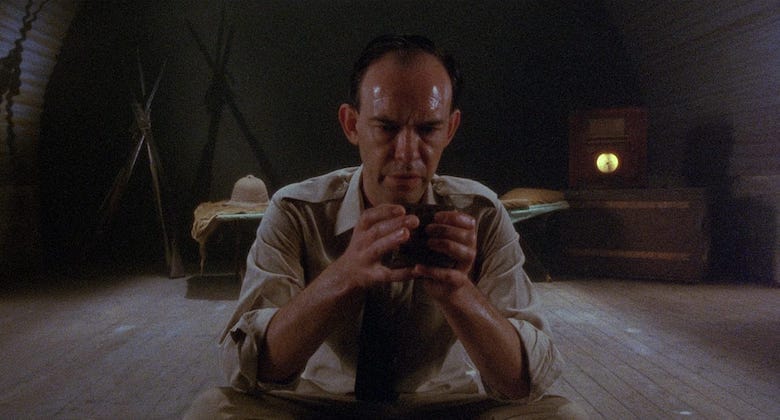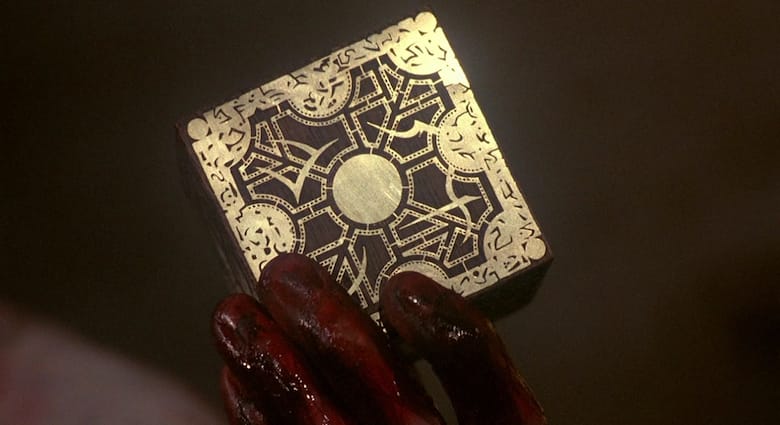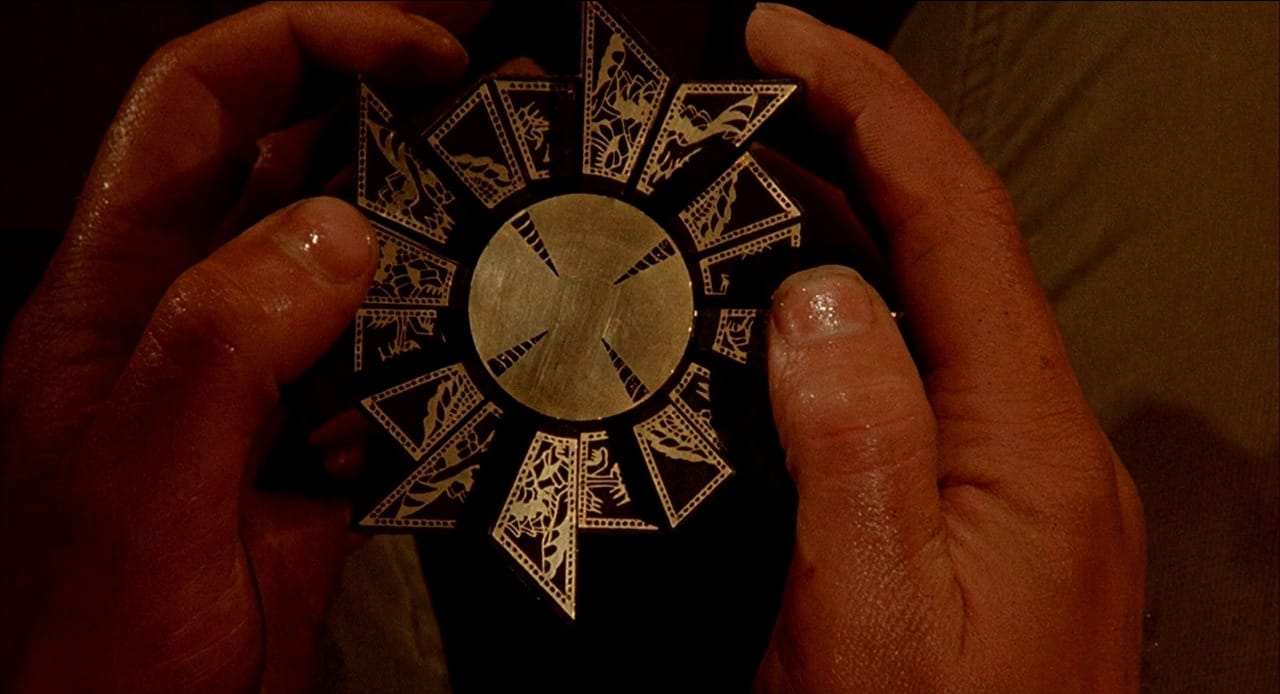Shivering with sweat in a dark room, a man kneels on bare floorboards. Illuminated by candles, he works feverishly to solve the puzzle box in his hands. An ornate construction, made up of sliding panels and mysterious chambers. The air flexes with a distant tolling bell as polished pieces click into place. Out of it, a banal melody plays on a hidden mechanism. The din is reduced to a naked scream as the gates of hell open.
The Lament Configuration.
What is your pleasure, sir?
Clive Barker’s horror novella The Hellbound Heart was first published in 1986. Dissatisfied with other film adaptations of his work, Barker made his directorial debut with Hellraiser in 1987, an almost verbatim adaptation of the novella. The film was the beginning of a multimedia franchise expanding on The Hellbound Heart. Each sequel peels away more layers of Barker’s dark dreamscape. The doors of which are opened by a 3-inch cube called the “Lament Configuration.”

The Hellraiser puzzle box was originally called “the Lemarchand Configuration” in Barker’s novella, known to most humans as only a rumor on the lips of a derelict. Several boxes were thought to exist but few were willing to track one down. Described as charts of the interface between the real and realer still. A box would break the surface of the trivial delights of human condition. The novella mentions one being locked away in the vaults of The Vatican. Another is said to have been used by the Marquis De Sade while imprisoned in the Bastille.
All boxes were said to be created by a French craftsman, Philip LeMarchand. Previously famed for creating mechanical birds, he constructed a tool in the form of a toybox. A puzzle that to solve would mean to travel across the schism. Philip LeMarchand’s background would develop later in Epic’s Hellraiser comic series. Running from 1989-1993 with the support of Clive Barker. In them, LeMarchand was described as a mass murderer. Using human fat and bone in the construction of his boxes. Hellraiser IV: Bloodline (1996) served as a prequel and sequel. In this version, LeMarchand is an ingenious toymaker. He was commissioned to build a box by an aristocratic occultist, cursing his bloodline.

The existence of multiple boxes seems to have found its inspiration in the occult world. Some suggest it is reminiscent of the 13 Crystal Skulls mythology. Or more seriously, The Key of Solomon, a Renaissance grimoire of seals that command spirits. Barker once explained wanting access to hell in the book and movie. “Explored by something rather different than drawing a circle on the floor with magical symbols around it.” The idea of a puzzle came from childhood memories of his grandfather. A ship’s cook, having returned from a trip to the Far East with souvenirs. After one particular trip, Barker was given a carved wooden puzzle box.
Description of the Hellraiser Puzzle Box
In The Hellbound Heart, the Lemarchand Configuration was described as smooth. Black lacquered faces with hidden pressure points. A surface reflecting faces of souls caught up in the obsession. Inside were the mirrored innards of fluted slots and oiled pegs. The cinematic version of the Lament Configuration was made of polished wood and brass. Special effects designer, Simon Sayce had studied ancient writings and symbolism from North Africa to China. He notes the inlaid characters of box’s brass work, inspired by surgical tools from an exhibit at the Pitt Rivers Museum. This was later to be seen as the disembodied torture devices summoned by the box.
The instructions to solving the Lament Configuration were part pragmatic and part metaphysical. The Hellraiser puzzle box requires a cunning mind and nimble fingers. But to truly open it requires a dark desire for knowing. Desperate individuals seeking pleasure beyond mortal understanding. “You have to become aware of the Lament Configurations,” claims Doug Bradley. Longtime friend of Barker and actor that portrayed lead cenobite, Pinhead. “And then you have to find one, and then solve the puzzle. It’s not just the physical act of opening the box. It’s the motivation behind it.”
— FOUNDATIONS OF HORROR —
Further explore these subgenres & tropes. more>>
#Artifacts, Objects, and Hell Providers | #Gothic horror | #Erotic Horror | #Lovecraftian

Barker’s Configuration has lent its inspiration to the modern urban legend/Creepypasta called The Devil’s Toybox. Part of a Halloween roadside attraction in rural Louisiana. It is described as a single room shack with 6 inward facing mirrors. The attraction’s challenge is to step inside for as long as possible without losing your mind. Another inspired object of the same name is used by paranormal investigators. These Devil’s Toy Boxes are much smaller mirrored contraptions. Popularized by Joshua P. Warren on Coast to Coast AM, it is believed to create an endless loop of energy. Some claim it attracts spirits and demons. Others utilize it to trap and remove negative entities.
You have to become aware of the Lament Configurations. And then you have to find one, and then solve the puzzle. It’s not just the physical act of opening the box. It’s the motivation behind it.
The puzzle box remains an iconic artifact. Possessing an intricate mythology splashed across the pages of books, comics, and the big screen. Inspiring artwork, jewelry, toys, coasters, and a wide variety of other replicas. Many online merchants peddle puzzles that might offer access to paradise instead of hell. What kind of doors can you unlock with your own Lament Configuration? What is your pleasure?
Additional Links
Hellraiserbox.net
HellraiserPuzzlebox.com
ThePuzzleboxMaker.com (including schematics)
Cinobite.com
Last Updated on May 9, 2021.

